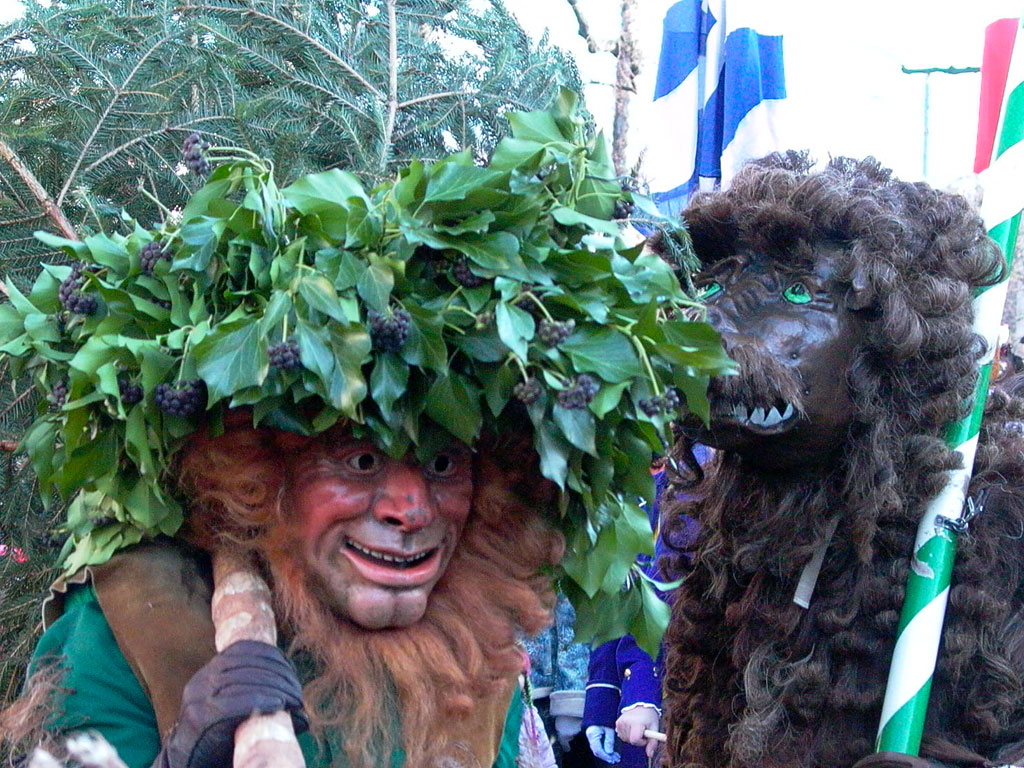Why is “CH” the international symbol for Switzerland?
Wild Maa (green man) and “Leu” (lion)… are two of three heraldic figures who take part in the Vogel Gryff festival in Kleinbasel, the part of Basel on the right bank of the Rhine. © swissworld.org
Since my Forest Knights novels have a character, Seraina, who is one of the last druid priestesses, I thought it would be fun to describe some modern-day Swiss festivals with Celtic ties. So that’s what I’ll be doing in the next few posts.
A bunch of Celtic Pagans
“CH” stands for “Confoederatio Helvetica” which is Latin and the official name for Switzerland. How did this come about?
Well, it turns out “Helvetica” is more than just a cool font. It refers to the “Helvetians”, the main tribe of Celts that populated the area now known as Switzerland.
When one mentions Celts, people tend to think of Ireland. But there were many, many, many (that’s how I say “I don’t know how many”) tribes of Celts living throughout Europe before the Romans got their mitts on them. The Celts in the British Isles were simply the last ones to be exposed to Roman occupation, so historically we know more about them than the others (the Irish monks were an exceptionally learned lot and kept good records).
The Romans generally referred to the Celts as Gauls. So Asterix was a Gaul and a Celt, but not a Helvetian!
The Romans pushed into the Celtic world for a few hundred years around the 3rd century BC, setting up Roman towns and building roads. They killed off many tribes and bred out even more, but eventually, when the Roman Empire began to contract, they retreated from the Celtic areas and fled back south. They left behind a bunch of roads, some aqueducts, and a few arenas. And probably some excellent wine recipes.
My point is, Switzerland has strong ties to its Celtic past. We can see this in many of the festivals and “religious” practices happening today.












Recent Comments